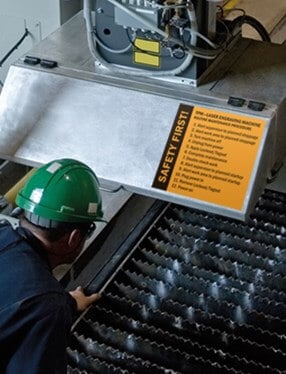Optimize Safety and Efficiency: To-Do List
03
February,
2023
2 MINUTE READ

Marking a third consecutive annual increase in 2016, there were 5,190 workplace fatalities. This caused alarm among safety professionals who then set out to find ways to improve safety by addressing top concerns. The National Safety Council conducted a survey to identify the top areas of safety concern for employees.
"We believe every injury is preventable, and by drawing attention to these critical areas we can improve employee safety," said Mark Vergnano, chairman of the National Safety Council Board.
Combating Top Concerns
Worker safety should be a top priority for all employers. Businesses can hit the ground running with safety in 2019 by utilizing the NSC survey as a way to control hazards and boost safety. Here are six areas where workers feel safety should increase and possible solutions to help:
- Driving on the job: There were 2,083 workers killed in transportation-related accidents in 2016, according to the Bureau of Labor Statistics.
- Use workplace policies and education.
- Mark blind corners for forklift traffic and post speed limit signage.
- Identify work areas and pedestrian boundaries with highly-visible floor tape and traffic safety signs.
- Older workers: Workers ages 55 and older were killed on the job 9.9% more in 2016 than in the year prior with 1,848 deaths total in 2016. Aging baby boomers are remaining in the workforce longer, which may be contributing to the increase in the number of deaths for older workers.
- Be cognizant of the potential risks to older employees and take appropriate measures to address them.
- Use large print signage and labels to improve visibility of important messages.
- Keep AED stations and other emergency areas fully stocked and ready for use.
- Amplify emergency station areas with floor marking for advanced emergency preparedness.
 Contract/temporary workers: In 2016, 856 deaths were contract workers. Contract or temporary workers can often perform higher-risk jobs at work sites, at times with little to no management supervision.
Contract/temporary workers: In 2016, 856 deaths were contract workers. Contract or temporary workers can often perform higher-risk jobs at work sites, at times with little to no management supervision.
- Include a formal contractor safety program within overall health and safety plan.
- Implement a job hazard analysis, taking contract workers in mind.
- Convey safety best practices and OSHA standards with new and temporary staff.
- Slip, trips, and falls: Workplace fatalities involving slips, trips, and falls increased by 6% from 2015, totaling to 849 in 2016.
- Assess the risks of working from heights and provide the correct equipment for the task.
- Increase foot to floor traction in slippery areas using floor tape with built-in tread.
- Organize and keep up spill containment stations.
- Violence: There were 500 workplace deaths in 2016 that were attributed to violence.
- Provide a workplace violence prevention program and training, including discussions with local police and fire departments.
- Drugs/alcohol: Drug overdoses killed 217 workers in 2016.
- Re-evaluate workplace policies on pain management and occupational health.
- Remind and direct employees to trusted drug and alcohol treatment assistance programs using signage that includes contact information.
RELATED RESOURCES

Strategies for a Confident Supply Chain System
Today's supply chain systems are streamlining everything, from software to safety programs, for maximized ...
Read
7 Tips for Safety Signs Workers Will Read
When done efficiently, safety signs warn workers of potential hazards to avoid injuries in the workplace. ...
Read
Judge Upholds "'Midnight Rider"' Citation
Citations were issued following the death of Sarah Jones, a 27-year-old camera assistant. A federal judge ...
Read.png)


